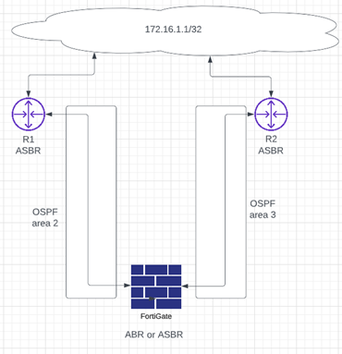- Support Forum
- Knowledge Base
- Customer Service
- Internal Article Nominations
- FortiGate
- FortiClient
- FortiADC
- FortiAIOps
- FortiAnalyzer
- FortiAP
- FortiAuthenticator
- FortiBridge
- FortiCache
- FortiCare Services
- FortiCarrier
- FortiCASB
- FortiConverter
- FortiCNP
- FortiDAST
- FortiData
- FortiDDoS
- FortiDB
- FortiDNS
- FortiDLP
- FortiDeceptor
- FortiDevice
- FortiDevSec
- FortiDirector
- FortiEdgeCloud
- FortiEDR
- FortiEndpoint
- FortiExtender
- FortiGate Cloud
- FortiGuard
- FortiGuest
- FortiHypervisor
- FortiInsight
- FortiIsolator
- FortiMail
- FortiManager
- FortiMonitor
- FortiNAC
- FortiNAC-F
- FortiNDR (on-premise)
- FortiNDRCloud
- FortiPAM
- FortiPhish
- FortiPortal
- FortiPresence
- FortiProxy
- FortiRecon
- FortiRecorder
- FortiSRA
- FortiSandbox
- FortiSASE
- FortiSASE Sovereign
- FortiScan
- FortiSIEM
- FortiSOAR
- FortiSwitch
- FortiTester
- FortiToken
- FortiVoice
- FortiWAN
- FortiWeb
- FortiAppSec Cloud
- Lacework
- Wireless Controller
- RMA Information and Announcements
- FortiCloud Products
- ZTNA
- 4D Documents
- Customer Service
- Community Groups
- Blogs
- Fortinet Community
- Knowledge Base
- FortiGate
- Technical Tip: OSPFv2 ECMP for External Routes Exp...
- Subscribe to RSS Feed
- Mark as New
- Mark as Read
- Bookmark
- Subscribe
- Printer Friendly Page
- Report Inappropriate Content
Created on
06-28-2022
06:04 AM
Edited on
10-28-2025
06:58 AM
By
![]() Stephen_G
Stephen_G
| Description |
This article describes a scenario when external Routes with the same cost 'ECMP' to the ASBRs are not installed on the routing table or database. |
| Scope |
FortiGate. |
| Solution |
OSPF by default works with ECMP RFC 2328 which introduces Intra-area paths using non-backbone areas are most preferred and Intra-area backbone paths and inter-area paths have equal preference. OSPF prefers intra-area routes in non-backbone areas to reduce backbone overhead. As per ECMP RFC 1583, path selection is based solely on cost and can be used to allow FortiGate to install external routes of same cost in the routing database. FortiGate by default has RFC1583 Compatibility disabled hence, it is expected that FortiGate will only install one external route in the routing table even if the cost is equal; however this behavior can be changed by RFC1583 Compatibility configuration by using below:
config router ospf set rfc1583-compatible enable end
Note: The above change will force all OSPF adjacencies to restart. Thus, it is highly recommended to make the changes in a scheduled maintenance window.
Troubleshooting steps:
config router ospf get
get router info ospf database external lsa X.X.X.X<-- X.X.X.X is the external route
As shown in the below topology, FortiGate has two OSPF adjacencies with R1 and R2. The OSPF area between FortiGate and R1 is area 2 and area 3 between FortiGate and R2, both areas are normal OSPF areas.
However, the areas can be special areas such as stubby or NSSA.
Both R1 and R2 are ASBR, they are redistributing the subnet 172.16.1.1/32 into OSPF from another administrative domain.

FortiGate-VM64-KVM # config router ospf FortiGate-VM64-KVM (ospf) # get rfc1583-compatible : disable ! FortiGate-VM64-KVM # get router info ospf neighbor OSPF process 0, VRF 0: Neighbor ID Pri State Dead Time Address Interface 2.2.2.2 1 Full/ - 00:00:34 192.168.22.1 port2 3.3.3.3 1 Full/ - 00:00:36 192.168.33.1 port3 ! FortiGate-VM64-KVM # get router info routing-table details Codes: K - kernel, C - connected, S - static, R - RIP, B - BGP O - OSPF, IA - OSPF inter area N1 - OSPF NSSA external type 1, N2 - OSPF NSSA external type 2 E1 - OSPF external type 1, E2 - OSPF external type 2 i - IS-IS, L1 - IS-IS level-1, L2 - IS-IS level-2, ia - IS-IS inter area * - candidate default
Routing table for VRF=0 O E2 172.16.1.1/32 [110/20] via 192.168.33.1, port3, 00:00:44 ---> only one route in the routing table via area3 C 192.168.10.0/24 is directly connected, port1 C 192.168.22.0/24 is directly connected, port2 C 192.168.33.0/24 is directly connected, port3 ! FortiGate-VM64-KVM # get router info ospf database external lsa 172.16.1.1
AS External Link States ---> OSPF database learnt the route 172.16.1.1 via the two adjacencies.
LS age: 1732 Options: 0x20 (*|-|DC|-|-|-|-|-) LS Type: AS-external-LSA Link State ID: 172.16.1.1 (External Network Number) Advertising Router: 2.2.2.2 LS Seq Number: 80000001 Checksum: 0x11c8 Length: 36 Network Mask: /32 Metric Type: 2 (Larger than any link state path) TOS: 0 Metric: 20 Forward Address: 0.0.0.0 External Route Tag: 0
LS age: 1759 Options: 0x20 (*|-|DC|-|-|-|-|-) LS Type: AS-external-LSA Link State ID: 172.16.1.1 (External Network Number) Advertising Router: 3.3.3.3 LS Seq Number: 80000001 Checksum: 0xf2e2 Length: 36 Network Mask: /32 Metric Type: 2 (Larger than any link state path) TOS: 0 Metric: 20 Forward Address: 0.0.0.0 External Route Tag: 0
FortiGate-VM64-KVM # config router ospf FortiGate-VM64-KVM (ospf) # set rfc1583-compatible enable ! FortiGate-VM64-KVM # get router info routing-table details Codes: K - kernel, C - connected, S - static, R - RIP, B - BGP O - OSPF, IA - OSPF inter area N1 - OSPF NSSA external type 1, N2 - OSPF NSSA external type 2 E1 - OSPF external type 1, E2 - OSPF external type 2 i - IS-IS, L1 - IS-IS level-1, L2 - IS-IS level-2, ia - IS-IS inter area * - candidate default
Routing table for VRF=0 O E2 172.16.1.1/32 [110/20] via 192.168.22.1, port2, 00:00:01 <----- Once enabled the two routes are installed in the routing table. [110/20] via 192.168.33.1, port3, 00:00:01 C 192.168.10.0/24 is directly connected, port1 C 192.168.22.0/24 is directly connected, port2 C 192.168.33.0/24 is directly connected, port3
Related document: |
The Fortinet Security Fabric brings together the concepts of convergence and consolidation to provide comprehensive cybersecurity protection for all users, devices, and applications and across all network edges.
Copyright 2025 Fortinet, Inc. All Rights Reserved.